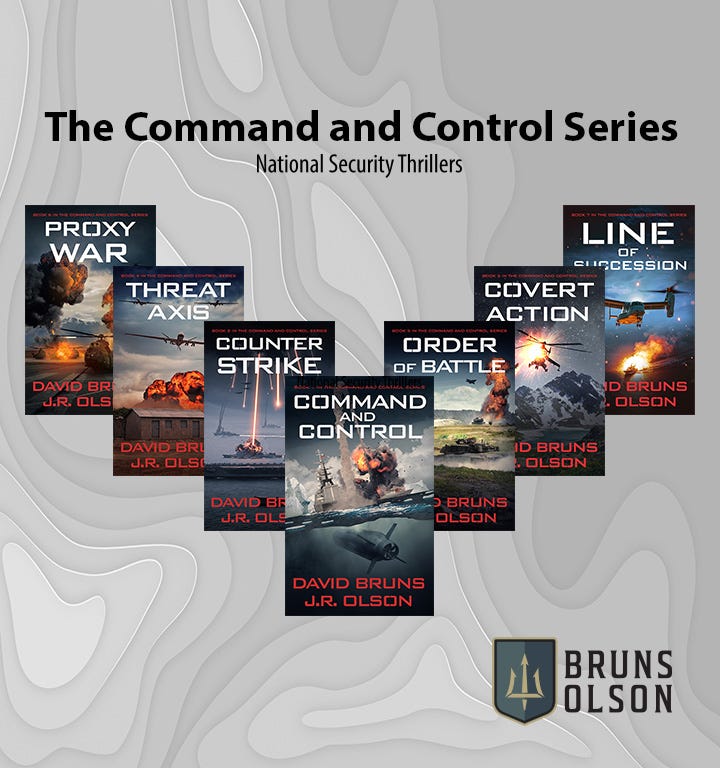A rough transition to civilian life
When David left the nuclear Navy, he interviewed for a job at a large industrial gas plant in Vancouver, Washington. The heart of the plant was a 150-foot-tall “cold box” where air was liquified and separated into its component elements, namely nitrogen, oxygen, and argon.
The plant manager had just finished giving David a tour of the 30-year-old plant when an operator came up and handed him a few handwritten pages torn from a spiral-bound notebook.
Wanting to be a curious interview candidate, David asked what was on the pages.
“It’s the plant startup procedure,” the GM said.
David laughed, but he soon found out he was laughing alone. “Wait, you’re serious?”
The GM, also a Navy vet, nodded. “Hard to believe, but the plant operations were just passed down from operator to operator through on-the-job training. We need a written procedure for ISO 2000 certification.” He waved the torn pages. “Here’s the first draft.”
David stared. In the nuclear submarine force, you don’t take a dump without a procedure. (That’s literally true. There are instructions on a placard above the toilet for how to operate the valves after you do your business.)
While maybe not to submarine standards, attention to procedures and training is true throughout the military. The reason is obvious: personnel and equipment must possess a base level of operability so that you can be an effective, flexible fighting force. If a C-130 crew chief moves from Kadena AFB in Okinawa, to Dover, Delaware, he can still do his job.
What might not be as obvious is the resources—time, money, and manpower—that go into perfecting those procedures and training.
Welcome to the battlefield of the future
We’ve written quite a bit about how Ukraine is changing the world of warfare.
If Mr. Putin’s Unnecessary War in Ukraine has taught us anything, it’s how much drones have changed the future battlefield. Cheap, ubiquitous, and deadly, drones are here to stay and that means they need to be integrated into war planning and training.
That’s no small task when it comes to the US military. The embrace of drone warfare means many, many procedures have to change across all the services. Between active duty and reserves, we’re talking about 2 million service members. The scope of changes with drones will touch a majority of those members in some way.
For example, Task and Purpose recently reported1 that the US Army, in response to the threat of drone swarms, has modified the capstone field training exercise in Basic Training so that graduates
…learn how to conceal themselves from drones…[including] training on how to limit their electronic signatures and decrease the size of command posts so that they don’t pose tempting targets.
The message is clear: “If you can be seen, you can be hit.”
That same publication also reported that the Marine Corps has established first-person viewer (FPV) attack drone teams to “make sure rifle squads have the technology and tactics to find and destroy enemies up to 20 kilometers away.”2
These are not small changes. Marines operate all over the world, in all types of terrain, climates, and fighting environments. If you integrate an attack drone team into your fighting force, it had better be worth the effort.
These are just two examples of how the lessons learned from Mr. Putin’s Unnecessary War in Ukraine are being integrated into the fighting force of the future, but they’re also just the tip of the iceberg.
Big questions will get asked and answered. Here’s one you might not have considered:
FPV drones require operators. What are the skillsets of the best drone operators? Do we need to screen for a different type of recruit in the future?
We’ll tackle that question next week. The answer will surprise you.
Thanks to you…
Last week’s worldwide sale on Command and Control was a huge success. If you bought a copy or sent the link to a friend or family member, thank you so much for all your support. We even netted a few more of those little orange bestseller tags.
Review of the Week
Our review this week comes from our writing compadre and CIA veteran Carmen Amato. On her Mystery Ahead newsletter, she published a very generous review of Covert Action.
As our readers know, there’s always a lot happening with a lot of characters in a Bruns-Olson novel, and Covert Action is no exception. Sometimes, we wonder if we’ve just made the whole story too complicated.
After a nice recap of the plot, Carmen goes on to address that concern head-on.
There are many moving parts and a full score of characters. But you never get confused because Bruns and Olson have a knack of telling a character’s backstory in a very short amount of literary real estate and making it unforgettable, too. The prose is crisp, fast-moving and despite the complexity, the storyline is easy to follow.
High praise coming from a writer of Carmen’s caliber!
Be happy. Stay healthy. Read (or listen to) a book.
As always, thanks for being a supporter –
David & JR, AKA the Two Navy Guys
PS – Are you looking for the FREE download of Death of a Pawn?
PPS - This email is free, but it's not cheap. If you'd like to show your support, here's where you can find all the Two Navy Guys' books.
PPPS - If you enjoyed this post, you can get it delivered to your inbox every week for free.
https://taskandpurpose.com/news/army-training-drones-conceal/










